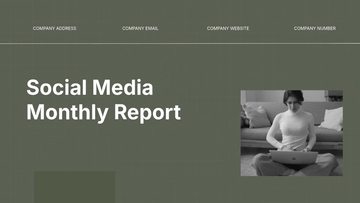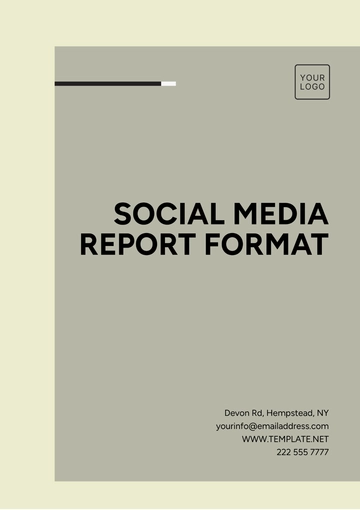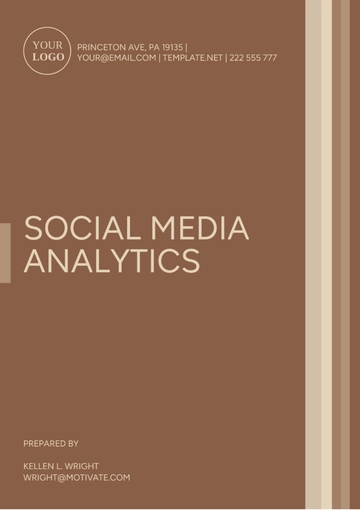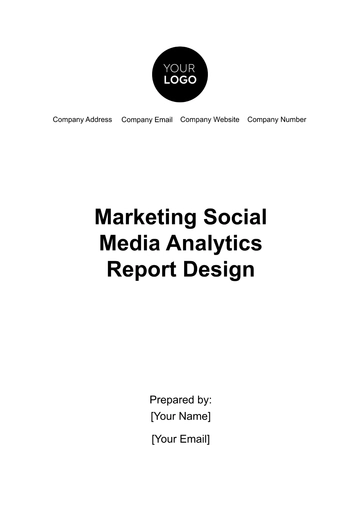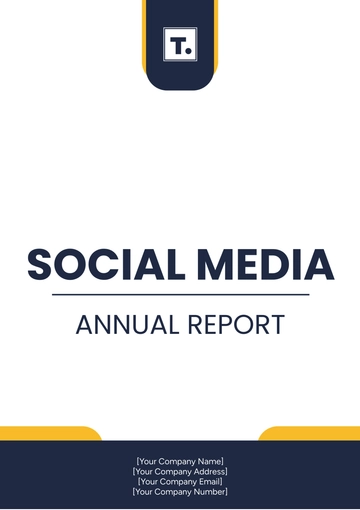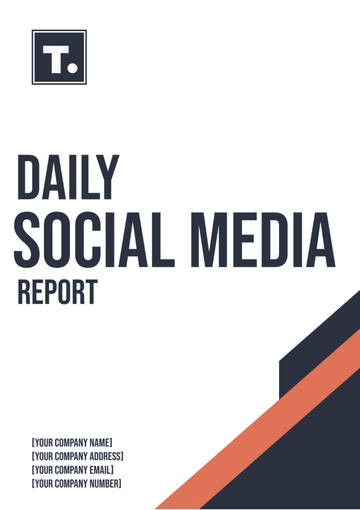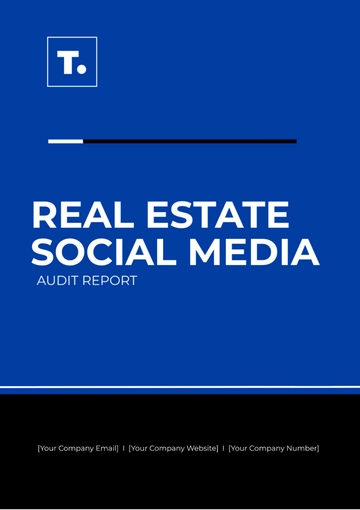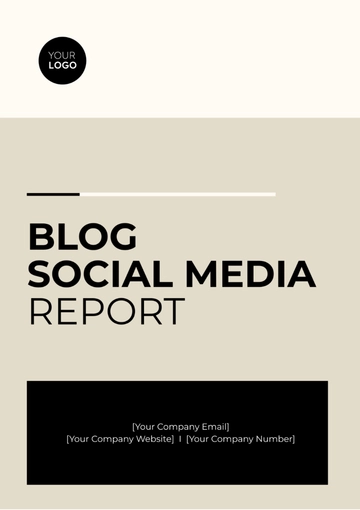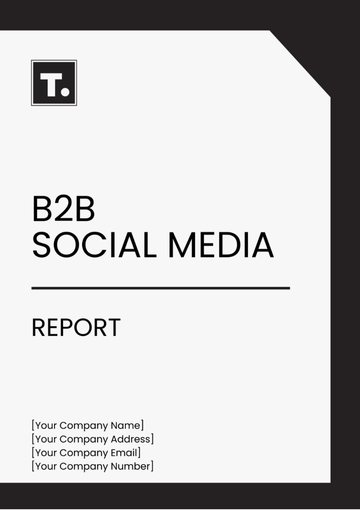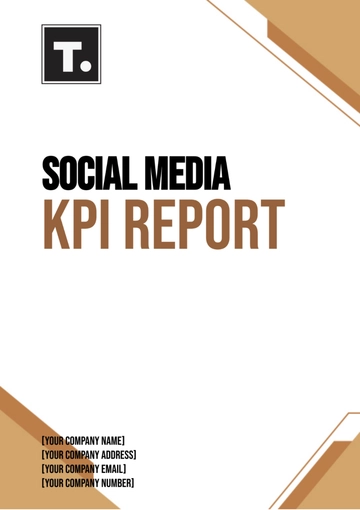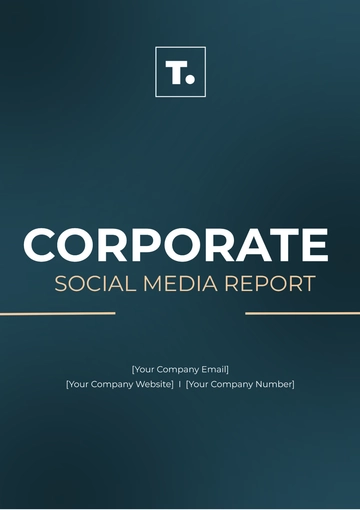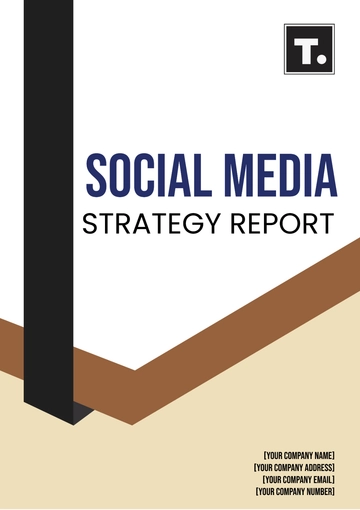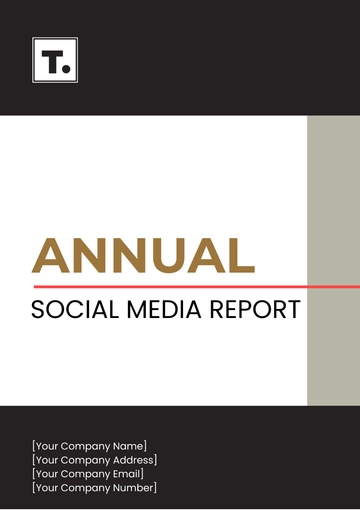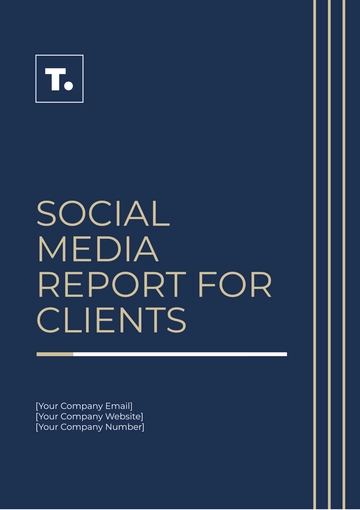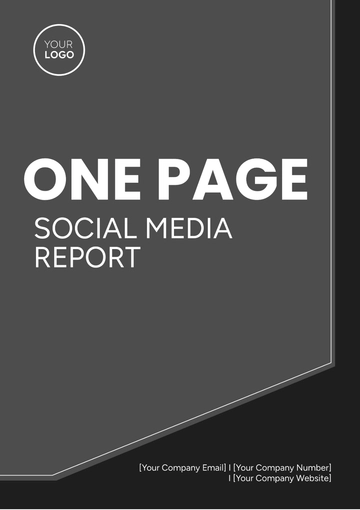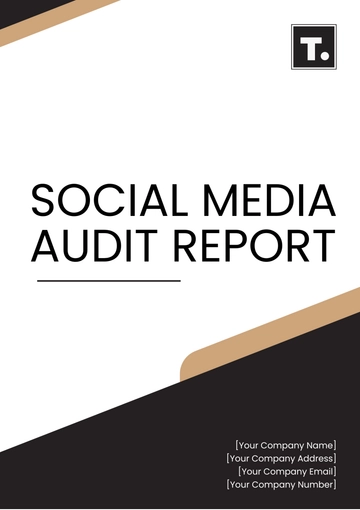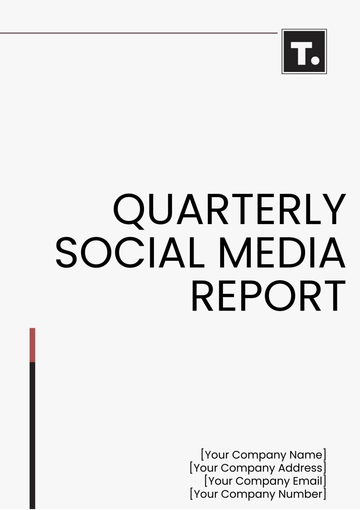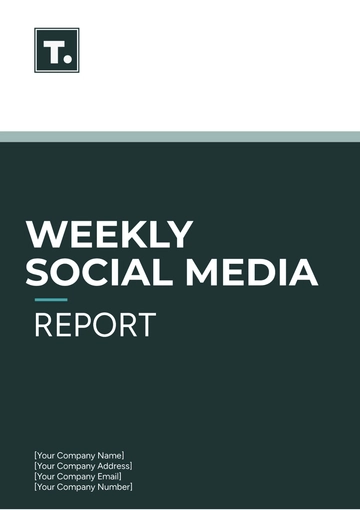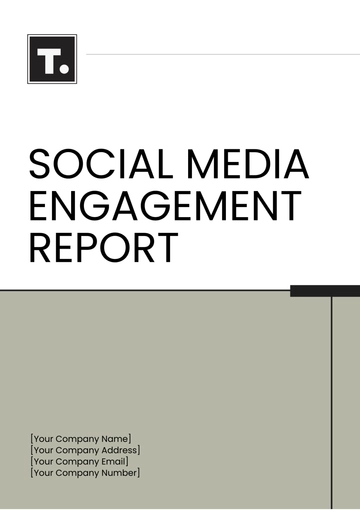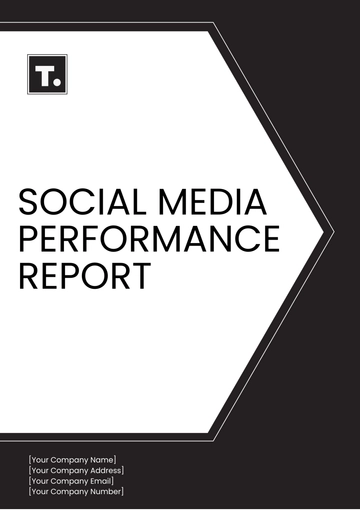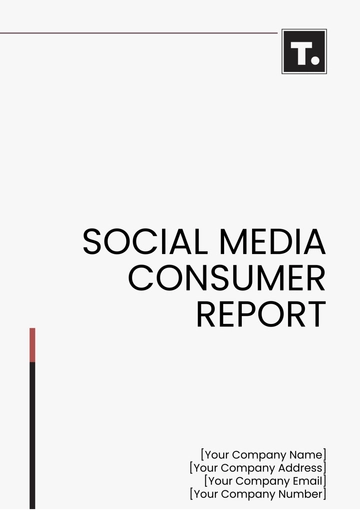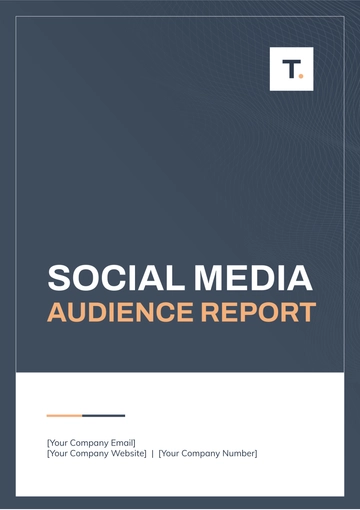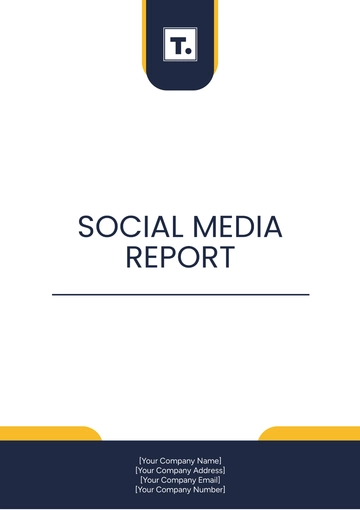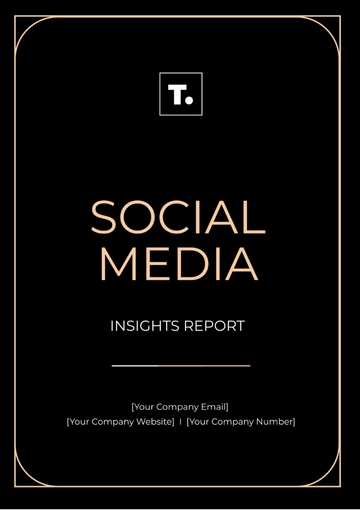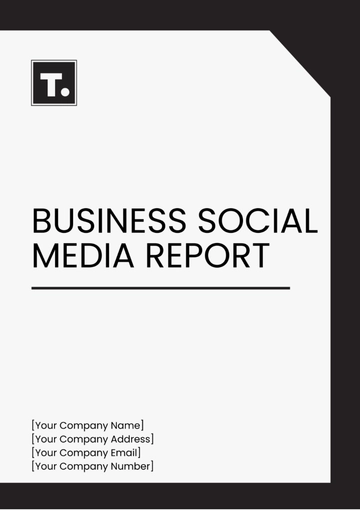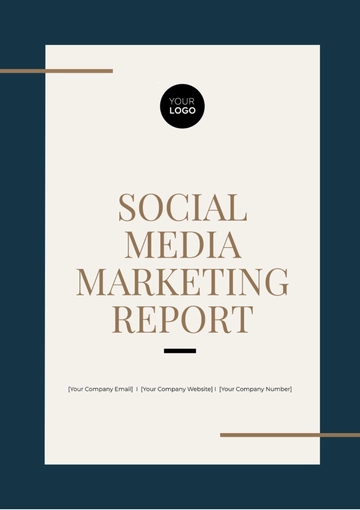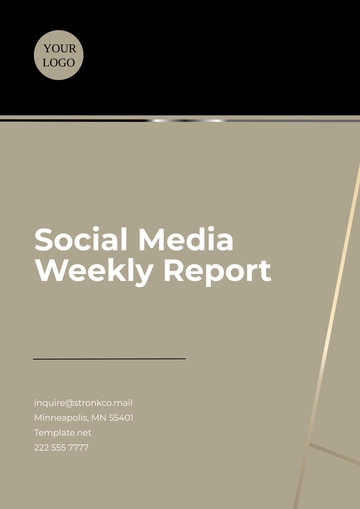Free Social Media Campaign Report
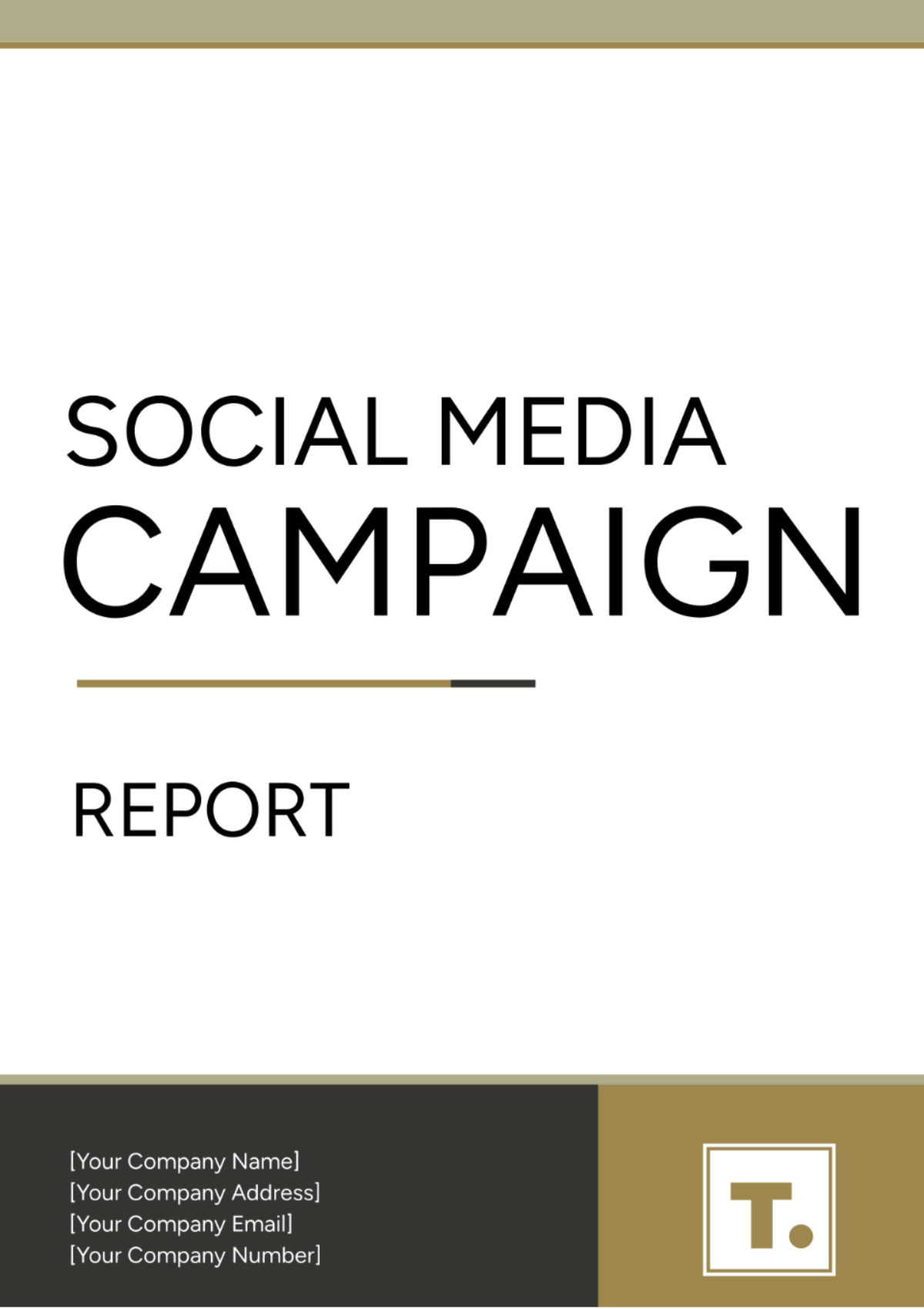
[Your Company Name]
[Your Company Address]
[Your Company Number]
[Your Company Email]
[Your Company Website]
[Your Company Social Media]
Date: October 1, 2050
Prepared by: [Your Name]
Email: [Your Email]
I. Executive Summary
This report provides an analysis of the recent social media campaign conducted by [Your Company Name]. It details the campaign objectives, performance metrics, audience engagement, and strategic recommendations for future campaigns. The campaign ran from July 1, 2050, to September 30, 2050, aiming to increase brand awareness, boost social media engagement, and drive website traffic. The insights gained from this analysis will inform future social media strategies to enhance overall performance and reach.
II. Campaign Overview
A. Objectives
1. Increase Brand Awareness
Enhance visibility and recognition of [Your Company Name] across all social media platforms.
2. Boost Social Media Engagement
Increase interactions (likes, comments, shares, retweets) to build a more active and engaged audience.
3. Drive Website Traffic
Redirect social media users to the company website to increase visits and potential conversions.
B. Duration
Start Date: July 1, 2050
End Date: September 30, 2050
III. Performance Metrics
A. Overall Performance
Platform | Followers Gained | Engagement Rate | Impressions |
|---|---|---|---|
1,200 | 5% | 100,000 | |
2,000 | 6% | 150,000 | |
800 | 4% | 50,000 |
Facebook:
Followers Gained: 1,200 new followers, contributing to a growing community.
Engagement Rate: 5%, reflecting solid interaction levels relative to audience size.
Impressions: 100,000, indicating significant reach and visibility.
Instagram:
Followers Gained: 2,000 new followers, showing strong attraction to visual content.
Engagement Rate: 6%, the highest among platforms, demonstrating excellent audience interaction.
Impressions: 150,000, the highest reach among platforms, highlighting the platform's effectiveness.
Twitter:
Followers Gained: 800 new followers, contributing to consistent audience growth.
Engagement Rate: 4%, indicating a moderate level of audience interaction.
Impressions: 50,000, showcasing considerable reach given the concise nature of the content.
B. Audience Demographics
Age Group:
25-34 years: 40%
This segment forms the largest portion of the audience, indicating the campaign's appeal to young professionals.
Gender Distribution:
Female: 60%
Predominantly female audience, important for tailoring future content.
Male: 40%
Substantial male following, ensuring a balanced approach in content strategy.
Location:
USA: 50%
Primary market, critical for focused engagement and localized content.
Canada: 20%
Significant market with notable engagement, suggesting potential for growth.
UK: 15%
Important market, effective for regional campaigns.
Others: 15%
Diverse international audience, indicating global reach.
IV. Engagement Analysis
A. Top Performing Posts
1. Instagram Post - "New Product Launch"
Likes: 3,500
Comments: 500
Insights: High engagement driven by product interest, suggesting success in product-focused content.
2. Facebook Video - "Behind the Scenes"
Reactions: 2,800
Shares: 300
Insights: Strong performance, indicating audience interest in authentic and behind-the-scenes content.
3. Twitter Poll - "Favorite Features"
Votes: 1,200
Retweets: 150
Insights: High participation in interactive content, highlighting the effectiveness of engagement tactics on Twitter.
B. Hashtag Performance
Top Hashtags Used:
#BrandAwareness: Utilized in 50 posts, garnered high visibility and engagement.
#NewLaunch: Featured in 30 posts, effectively promoted product launches.
#BehindTheScenes: Used in 20 posts, generated significant interest in company culture and processes.
Insights:
Consistent use of targeted hashtags helped increase content discoverability and engagement. Future campaigns should continue leveraging popular and relevant hashtags.
V. Recommendations
1. Increase Content Frequency on Instagram:
Instagram demonstrated the highest engagement rate. Increasing the frequency of posts can capitalize on this trend, driving further engagement and follower growth.
2. Utilize More Video Content on Facebook:
Facebook videos, particularly those offering behind-the-scenes insights, showed high engagement. Expanding video content can enhance interaction and reach.
3. Incorporate More Interactive Posts on Twitter:
Interactive content, such as polls and surveys, yielded significant engagement. Increasing the number of interactive posts can boost audience participation and interest.
4. Optimize Content for Key Demographics:
Focus content strategies to appeal to the predominant 25-34 age group and the largely female audience. Tailored content will likely drive higher engagement and relevance.
5. Enhance Geographic Targeting:
Given the substantial audience in the USA, Canada, and the UK, targeted campaigns in these regions can maximize impact. Additionally, exploring untapped international markets can broaden reach.
6. Leverage Analytics for Continuous Improvement:
Utilize detailed analytics to monitor performance, adjust strategies, and implement data-driven decisions. Continuous assessment will ensure campaign effectiveness and goal alignment.
VI. Conclusion
The social media campaign by [Your Company Name] successfully met its objectives of increasing brand awareness, boosting engagement, and driving website traffic. By focusing on platform-specific strategies and implementing the outlined recommendations, future campaigns can achieve even greater success and audience impact.
For additional details or inquiries, please contact [Your Name] at [Your Email].
- 100% Customizable, free editor
- Access 1 Million+ Templates, photo’s & graphics
- Download or share as a template
- Click and replace photos, graphics, text, backgrounds
- Resize, crop, AI write & more
- Access advanced editor
Unlock powerful insights with the Social Media Campaign Report Template from Template.net. This fully editable and customizable template is designed to simplify your reporting process. Featuring an AI Editable Tool, it allows for effortless adjustments, ensuring your reports are always precise and professional. Elevate your social media analysis with ease and efficiency.
You may also like
- Sales Report
- Daily Report
- Project Report
- Business Report
- Weekly Report
- Incident Report
- Annual Report
- Report Layout
- Report Design
- Progress Report
- Marketing Report
- Company Report
- Monthly Report
- Audit Report
- Status Report
- School Report
- Reports Hr
- Management Report
- Project Status Report
- Handover Report
- Health And Safety Report
- Restaurant Report
- Construction Report
- Research Report
- Evaluation Report
- Investigation Report
- Employee Report
- Advertising Report
- Weekly Status Report
- Project Management Report
- Finance Report
- Service Report
- Technical Report
- Meeting Report
- Quarterly Report
- Inspection Report
- Medical Report
- Test Report
- Summary Report
- Inventory Report
- Valuation Report
- Operations Report
- Payroll Report
- Training Report
- Job Report
- Case Report
- Performance Report
- Board Report
- Internal Audit Report
- Student Report
- Monthly Management Report
- Small Business Report
- Accident Report
- Call Center Report
- Activity Report
- IT and Software Report
- Internship Report
- Visit Report
- Product Report
- Book Report
- Property Report
- Recruitment Report
- University Report
- Event Report
- SEO Report
- Conference Report
- Narrative Report
- Nursing Home Report
- Preschool Report
- Call Report
- Customer Report
- Employee Incident Report
- Accomplishment Report
- Social Media Report
- Work From Home Report
- Security Report
- Damage Report
- Quality Report
- Internal Report
- Nurse Report
- Real Estate Report
- Hotel Report
- Equipment Report
- Credit Report
- Field Report
- Non Profit Report
- Maintenance Report
- News Report
- Survey Report
- Executive Report
- Law Firm Report
- Advertising Agency Report
- Interior Design Report
- Travel Agency Report
- Stock Report
- Salon Report
- Bug Report
- Workplace Report
- Action Report
- Investor Report
- Cleaning Services Report
- Consulting Report
- Freelancer Report
- Site Visit Report
- Trip Report
- Classroom Observation Report
- Vehicle Report
- Final Report
- Software Report
